A year ago, the headlines were dire. “New York City is Dead Forever,” read one of the most memorable ones. More recently, another one was slightly more hopeful: “New York Is Not Dead, But It Is On Life Support.” There were plenty of predictions that the city — and cities in general, for that matter — would never recover from the devastation of the coronavirus pandemic. Quite frankly, that was how it felt. People were packing up and leaving, and this time it would be for good.
But quitting New York (or any major city around the world) isn’t so easy. When I walk down any street in Lower Manhattan, the Upper East or West Side, I encounter loads of shopping and strolling and jam-packed bars and restaurants whose patrons spill out along the sidewalks and into the streets with more vibrancy than ever. Comedy clubs and music venues are starting to fill up again. The Knicks and their short but incredible playoff run completely sold out Madison Square Garden. Have you been to a Yankees game? The stadium is energized. And Broadway is back, even if the sole performer is Bruce Springsteen. City officials are actually considering adding entertainment districts where people can party 24 hours a day competing against other major hubs around the world. After all, no one actually quit New York, they just took a break.
I’m a New Yorker, and it’s clear to me that the city is on the road to recovery. If you need some stats to back up my anecdotal evidence, consider that the residential real estate market is seeing rising prices, surging sales, and even bidding wars. In the second quarter of 2021, the number of sales in Manhattan saw a year-over-year increase of 150%. That’s not just a blip on the radar screen, either. Overall, it’s the strongest quarter since 2007. That’s incredible.
It’s not just buyers that are returning to New York. Sensing the market rebounding, Manhattan renters signed a record number of leases in June. It’s a trend that’s reflected in cities all across the country. Rents are rising and inventories are shrinking just about everywhere, and the so-called second-tier metropolitan areas like Phoenix, Tucson, and Las Vegas have seen more than a 10% increase in rents.
Despite all the doom-and-gloom predictions, cities haven’t died. In fact, we’re now seeing a massive influx of people heading back to urban areas. There’s a new “new normal”, and it turns out that it looks more like the old normal than many people thought. We’re seeing a lot of changes, but they aren’t necessarily the grim ones that people were predicting a year ago.
Lots of people — especially young people — are excited about living in cities. In New York, college students who haven’t been on campus in over a year are signing leases much earlier than usual because prices haven’t quite returned to pre-Covid levels. The influx of students and young professionals has meant that the median age of renters dropped from 28.6 in January to 23.5 in May. That’s the kind of change that often takes years.
So why the return to New York and cities in general? It’s not just that people like the benefits of living in cities. That’s also where the jobs are. Yes, one of the lessons of the pandemic is that we realized that much of our workforce can do their jobs from anywhere. Workers were happy to give up their daily commute. Employers envisioned the need for less office space. Experts predicted a complete shakeup of the traditional way of doing business. But that doesn’t mean living anywhere forever. There is a need and desire to be close to the people you work with.
What ended up happening was less of a shakeup and more of an acceleration of a trend that had begun long before the pandemic. Many companies, just like us at JBC, are instituting a hybrid workforce where employees come into the office two or three days a week. They want their employees to get to know their colleagues, build strong teams, and understand the corporate culture, and that doesn’t necessarily require being in the office full-time. You just can’t create this personalization remotely. Team members have to get together in the same room. To accomplish this, they have to live in or near where their office is located at least part of the time. The other half of the week or month they can enjoy the flexibility that remote work offers.
There’s an undeniable gravitational pull back toward cities. When you read about the record number of job openings in the U.S., the vast majority are in urban areas. There are more job openings out there than we had just before the pandemic, and employers are struggling to fill them. Many of these jobs are in hospitality, but we’re also seeing a growing number in other industries and disciplines as well. For example, there just aren’t enough developers and engineers to fill all the open jobs across all sectors. Employers are raising wages to attract new workers and keep the ones they already have, contributing to inflation and creating a war for talent.
We are seeing the same trend here at JBC, along with a record number of job openings. Our consumer client base and our fashion and beauty client base are competing for talent in both their corporate offices and in their retail environments. They’re preparing for a massive back-to-school season and a very busy holiday season. Even our internal hiring has hit levels we’ve never seen before. We have added 50+ recruiters in the first half of the year, and we intend to keep up or outpace the same levels of hiring in Q3 and Q4. Unless you can simply wait until 2022 to start rebuilding your workforce, keep in mind the game has changed, so the way you play it must also change.
The labor market is clearly going through an interesting transition — one I have not encountered before in my lifetime — but in my opinion it’s neither permanent nor damaging. By the fall or early winter, the end of the economic stimulus that has allowed workers to take their time deciding which job to take will nudge people back into the workforce. Parents who were forced into the dual roles of parent and teacher will return to the workforce once schools reopen this fall. Young people who ventured to new places or lived with their parents during the pandemic will join their peers in the cities.
Slowly but surely, things will return to where they were before the pandemic. We’re headed back to normal, and it’s a great thing to see. Hopefully I speak for not only myself but for many of you out there that it will be an even more rewarding thing to feel. Just remember everything that has happened these past 18 months, all of the unique lessons that we learned during the pandemic, and use them to propel ourselves forward.

